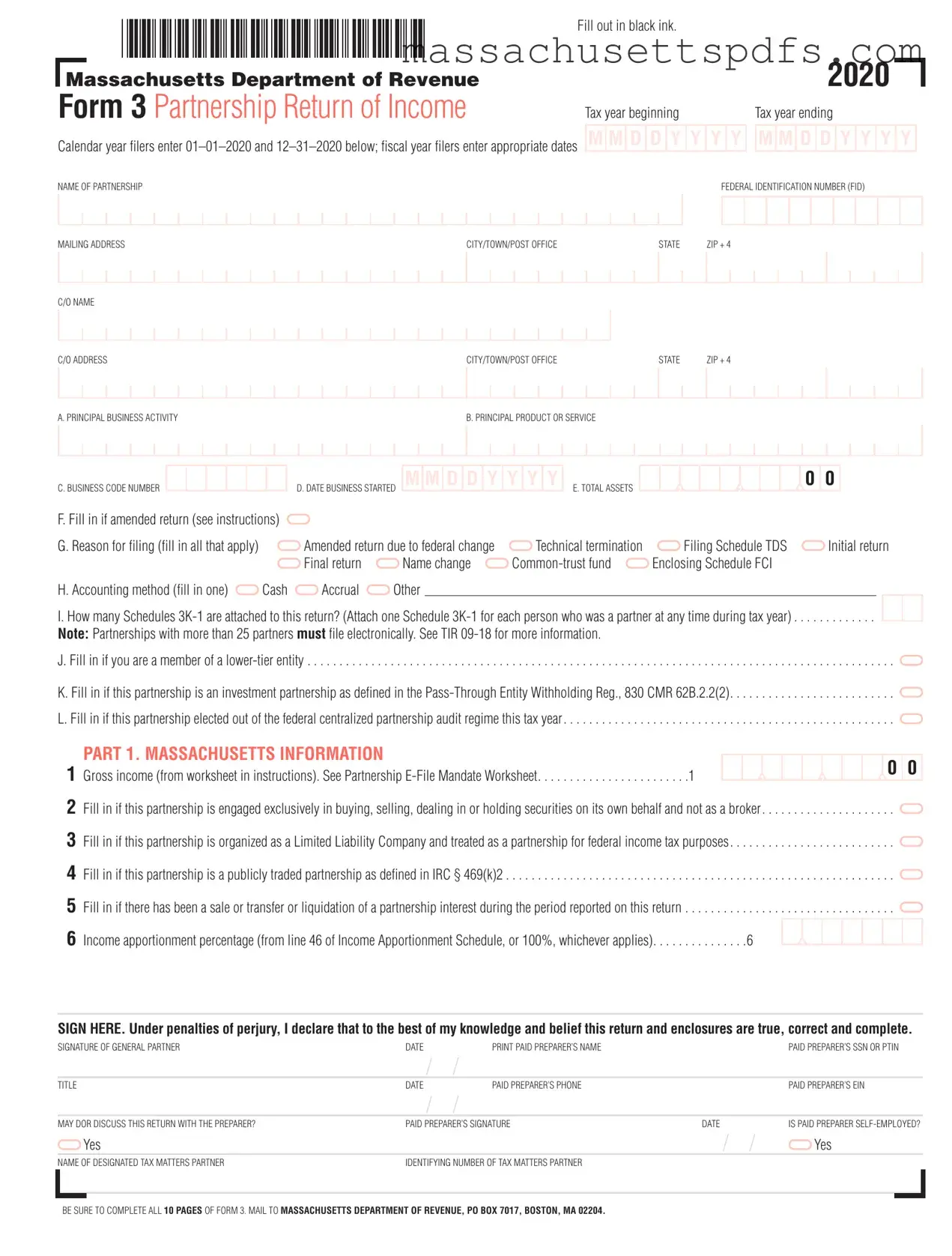Official Massachusetts 3 Template
The Massachusetts Form 3 is a tax return specifically designed for partnerships operating within the state. It is essential for reporting income, deductions, and credits accurately for the tax year. Completing this form ensures compliance with state tax regulations and helps avoid potential penalties.
To fill out the Massachusetts Form 3, please click the button below.
Launch Editor Here
